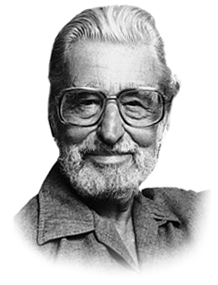
In this collection of 24 silly verse tongue-twisters, Dr. Seuss will delight readers of all ages with a simple story filled with hilarious nonsense! "Bed Spreaders spread spreads on beds. Bread Spreaders spread butter on breads. And that Bed Spreader better watch out how he's spreading... or that Bread Spreader's sure going to butter his bedding." Tongue twisters are more fun than almost anything, and that's why they're so easy to read. Beginners will laugh all the way through every page of 'Oh Say Can You Say? by Dr. Seuss. "I can read it all be myself" is the Beginner Books motto, and behind it is an understanding of how important it is for children to take pride and pleasure in their early reading. They are designed to appeal directly to children through the use of humor, rhyme and bright pictures that can be "read" even by the non-reading child. With his unique combination of hilarious stories, zany pictures and riotous rhymes, Dr. Seuss has been delighting young children, as well as helping them learn to read for over fifty years. Creator of the wonderfully anarchic 'Cat in the Hat', and ranked among the world's top children's authors, Dr. Seuss is a global best-seller, with nearly half a billion books sold worldwide.
Author

Theodor Seuss Geisel was born 2 March 1904 in Springfield, Massachusetts. He graduated Dartmouth College in 1925, and proceeded on to Oxford University with the intent of acquiring a doctorate in literature. At Oxford he met Helen Palmer, who he wed in 1927. He returned from Europe in 1927, and began working for a magazine called Judge, the leading humor magazine in America at the time, submitting both cartoons and humorous articles for them. Additionally, he was submitting cartoons to Life, Vanity Fair and Liberty. In some of his works, he'd made reference to an insecticide called Flit. These references gained notice, and led to a contract to draw comic ads for Flit. This association lasted 17 years, gained him national exposure, and coined the catchphrase "Quick, Henry, the Flit!" In 1936 on the way to a vacation in Europe, listening to the rhythm of the ship's engines, he came up with And to Think That I Saw It on Mulberry Street, which was then promptly rejected by the first 43 publishers he showed it to. Eventually in 1937 a friend published the book for him, and it went on to at least moderate success. During World War II, Geisel joined the army and was sent to Hollywood. Captain Geisel would write for Frank Capra's Signal Corps Unit (for which he won the Legion of Merit) and do documentaries (he won Oscar's for Hitler Lives and Design for Death). He also created a cartoon called Gerald McBoing-Boing which also won him an Oscar. In May of 1954, Life published a report concerning illiteracy among school children. The report said, among other things, that children were having trouble to read because their books were boring. This inspired Geisel's publisher, and prompted him to send Geisel a list of 400 words he felt were important, asked him to cut the list to 250 words (the publishers idea of how many words at one time a first grader could absorb), and write a book. Nine months later, Geisel, using 220 of the words given to him published The Cat in the Hat , which went on to instant success. In 1960 Bennett Cerf bet Geisel $50 that he couldn't write an entire book using only fifty words. The result was Green Eggs and Ham . Cerf never paid the $50 from the bet. Helen Palmer Geisel died in 1967. Theodor Geisel married Audrey Stone Diamond in 1968. Theodor Seuss Geisel died 24 September 1991. Also worked under the pen name: Theo Le Sieg